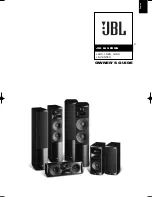
If necessary it is possible to further secure
or tamper proof the Alarm by using a No.2
or No.4 (2 to 3mm diameter - not supplied)
self tapping screw 6 to 8mm long to firmly
lock the Alarm and its mounting plate
together (see figure 6C).
5. Testing and Maintenance
Testing
Frequent testing of the system is a
requirement to ensure its continued and
safe operation. To test the Alarm press
and hold the test button. The Green LED
will flash and the horn will ramp up to full
sound to indicate the Alarm is operating
correctly. Guidelines and best practices
for testing are as follows:
1. After the system is installed
2. Once weekly thereafter
3. After prolonged absence from the
dwelling (e.g. after a holiday period)
4. After repair or servicing of any of the
systems elements or household electrical
works
Silencing (Hush)
When the Alarm sounds after sensing
CO, pressing the test/hush button will
immediately stop the horn (the red
light will continue to flash). If CO is still
present, the red light and the horn will
turn on again after about 4 minutes. The
unit can only be silenced once during a
CO incident. At levels > 300ppm CO, the
unit cannot be silenced.
Monitoring
The CO alarm will self check (monitor)
itself and give a status update every 50
seconds if there are any problems. The
status of the Alarm can also be checked
on demand by using the test button. If the
Alarms are indicating a fault, pressing the
test button will silence the beeps for a 24
hour period. This is for your convenience
and can only be done once.
the mounting plate attached.
6. Ensure the RF module is fitted
correctly into the base of the Alarm.
7. Remove the battery door and gently
pull the battery tab and replace the
battery door.
8. Carefully line up the Alarm on the
base, gently press home & twist on – see
figure 4. (This connects the batteries).
The red, amber & green lights will
immediately flash in sequence to show
they are working.
9. Press the Test button (after 15
seconds) to ensure that the Alarm works
(see figure 5).
10. Install all the other Alarms similarly.
Figure 5
4.2 How to Tamperproof the Alarm
The Alarm can be made resistant to
unauthorized removal. Break off the small
pillar on the base as shown in figure 6A.
To remove the Alarm from the ceiling it is
necessary to use a small screwdriver to
release the catch (push catch towards the
ceiling) and then twist off the alarm (see
figure 6B).
7
Figure 6C
Figure 6A
Figure 6B






























